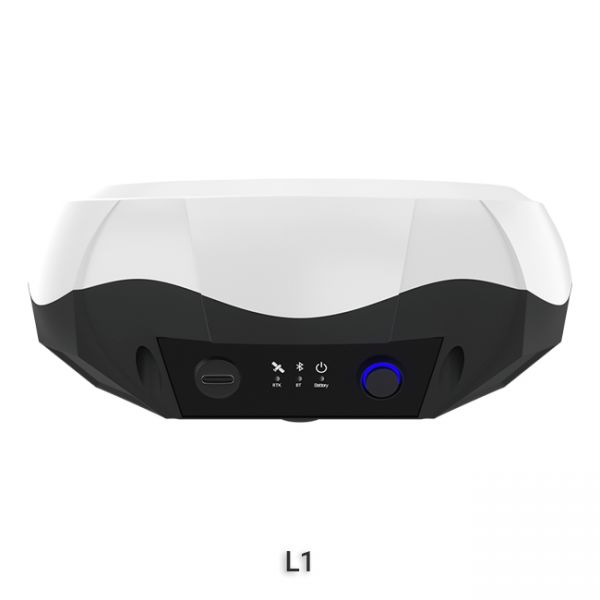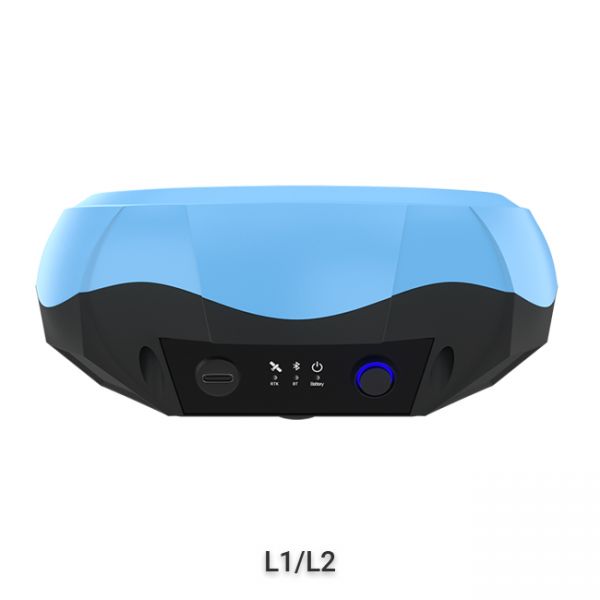GNSS RTK Receiver Channels: Impact and Significance
14.10.2023- Is it truly better to have a GNSS receiver with as many channels as possible?
- Several practical scenarios where the number of channels in a GNSS receiver can be particularly significant:
- Case Study: Flight in Challenging Weather Conditions
- Case Study: Optimizing Corn Cultivation
- Case Study: Precision Mapping of an Urban Building
GNSS (Global Navigation Satellite Systems) receivers enable us to accurately determine our location, navigate in unfamiliar places, and plan routes efficiently. However, few contemplate how these devices operate internally and which technical aspects impact their performance.
One of the crucial parameters of GNSS receivers is the number of channels they can process. This parameter significantly influences navigation efficiency and accuracy. In this article, we will explore how the number of channels in a GNSS receiver affects its performance and examine whether more channels always equate to higher accuracy. We will also delve into practical scenarios where a specific number of channels may be particularly important. Diving into technical details, we aim to assist you in making an informed choice of a GNSS receiver that suits your needs.
The number of channels in the receiver plays a crucial role in its efficiency and performance.
Here are some aspects influenced by the number of channels:
- Multi-Constellation Capability: Each GNSS system (e.g., GPS, GLONASS, Galileo, BeiDou) broadcasts its signals. A receiver with a high number of channels can simultaneously process signals from different satellite systems, enhancing reliability and coordinate accuracy.
- Multi-Frequency Capability: GNSS signals are transmitted on various frequencies (e.g., L1, L2, L5). A receiver with many channels can concurrently process signals from different frequencies, improving performance in the presence of strong multi-path interference and obstacles.
- Signal Acquisition Rate: A receiver with a high number of channels can efficiently and rapidly acquire satellite signals, especially during startup or when transitioning from obstructed environments, such as buildings.
- Multipath Mitigation: Receivers with numerous channels can better address multipath propagation issues, where signals reflect off surfaces, creating additional "false" paths.
- Dynamic Accuracy: A receiver with many channels can handle more data even while in motion, leading to more precise location determination.
- Time to First Fix: Receivers with a high number of channels can determine coordinates more quickly after startup.
Is it truly better to have a GNSS receiver with as many channels as possible?
When it comes to the question of whether having more channels is better or not, it depends on specific usage conditions. In more complex environments (such as urban settings where multipath issues are common), having a greater number of channels can be more beneficial. However, under standard conditions or with limited resources, a receiver with fewer channels may suffice for most tasks.
Several practical scenarios where the number of channels in a GNSS receiver can be particularly significant:
- Aviation: In aviation, having precise three-dimensional aircraft position data is critically important. When using GNSS for this purpose, a high number of channels is necessary to ensure a reliable signal during intense maneuvers and in conditions of limited visibility.
- Agriculture and Farming: In the agricultural sector, especially with the application of precision agriculture technologies, accurate knowledge of the location of agricultural machinery (such as automated tractors) is of paramount importance. A greater number of channels helps improve positioning accuracy, allowing for the optimization of expenses on fertilizers, water, and other resources.
- Surveying and Construction: In surveying, the precision of coordinate measurements is crucial. Working with GNSS RTK receivers, especially in urban environments with a high level of obstructions, a higher number of channels can enhance coordinate determination accuracy.
- Navigation in Dense Urban Environments: In urban settings with tall buildings, strong signal reflections off surfaces can occur, creating multipath interference. A receiver with a large number of channels can effectively filter out these obstructions.
In each of these scenarios, choosing a GNSS receiver with a sufficient number of channels can significantly enhance the efficiency, accuracy, and reliability of the navigation solution, leading to improved outcomes and resource savings.
Case Study: Flight in Challenging Weather Conditions
Imagine a scenario where a commercial passenger flight is required to take off in conditions of poor visibility due to cloud cover. In such a situation, precise and safe navigation becomes a matter of paramount importance. A GNSS receiver with a high number of channels plays a critical role here.
During takeoff, the aircraft connects to GNSS satellites. A receiver with a large number of channels is capable of simultaneously processing signals from multiple satellite systems (such as GPS, GLONASS, Galileo), ensuring more accurate and reliable navigation, especially in conditions of limited visibility and complex atmospheric conditions.
Accurate positioning in such situations enables pilots and air traffic controllers to make informed decisions, ensuring the safety and efficiency of the flight. A receiver with a high number of channels provides additional data that can be critically important in challenging weather conditions, where every second counts.
This example underscores how the technical specifications of a GNSS receiver can play a crucial role in aviation, providing safety and reliability for flights, especially in extreme weather conditions.
Case Study: Optimizing Corn Cultivation
Imagine a farmer cultivating corn on a large field. It's crucial for them to distribute fertilizers, irrigation, and other resources correctly to maximize yield. In this scenario, utilizing a GNSS receiver with a high number of channels holds great significance.
The farmer equipped their tractors with GNSS receivers featuring a high number of channels. Throughout the season, the receivers maintain continuous communication with satellites, allowing them to accurately pinpoint the location of each working element (such as sections of the sprayer) in the field.
This enables the farmer to apply fertilizers and plant protection agents precisely where needed, avoiding overlap or creating fixed overlaps (depending on the technological operation). This reduces resource expenses and increases operational efficiency, ultimately leading to higher crop yields.
Furthermore, if the field has irregularities or inclinations, receivers with a high number of channels allow for compensating these factors, ensuring more precise positioning even in challenging conditions.
This example illustrates how the use of GNSS receivers with a high number of channels can revolutionize modern agricultural practices, enhancing production efficiency and cost-effectiveness.
Case Study: Precision Mapping of an Urban Building
Imagine the task of creating a highly accurate map of an urban building in the heart of a sprawling metropolis. This building has intricate architecture, and its outlines are crucial for various engineering and construction projects.
Surveyors decided to employ a GNSS RTK receiver with a high number of channels. Using this device, they were able to obtain precise coordinates of the building's corners, as well as elevation data. This was particularly important considering the building's close proximity to neighboring structures and limited satellite visibility.
Thanks to the receiver with a high number of channels, the surveyors could conduct precise measurements, accounting for even slight inclines and irregularities of the building. These data were used to create a detailed map, serving as the foundation for numerous projects, including renovations, architectural enhancements, and the development of engineering infrastructure.
This example illustrates how the use of a GNSS RTK receiver with a high number of channels enables surveyors to work with high precision in the complex environment of an urban setting. This is of great significance when creating accurate surveying maps and plans for various construction and engineering projects.
The single-frequency GNSS receiver "GM PRO S" of improved accuracy on a free satellite signal. A new series of receivers in a compact GM PRO mini body. The receiver has 335 channels for communication with satellites. Works with all satellite systems: GPS, GLONASS, GALILEO, BEIDOU, QZSS and can work in any country in the world. It can be used in geodesy, agriculture, forestry and other industries where high accuracy is important.
The "GM PRO U" GNSS RTK receiver is a dual-frequency (L1, L2) 184-channel RTK receiver that works simultaneously with several satellite systems and receives corrections in RTCM 3.X.X format. This receiver is compatible with any software. A new series of GM PRO mini receivers in a compact case.
GNSS RTK receiver GM PRO L is a multi-frequency (L1, L2, L5) 965-channel receiver with an antenna that operates simultaneously with GPS, GLONASS, GALILEO, BeiDou, QZSS, IRNSS satellite systems and accepts corrections in the RTCM 3.X.X format. This receiver is designed to work with any software. Designed for professional use in surveying, agriculture, forestry and other industries where high accuracy is important.





